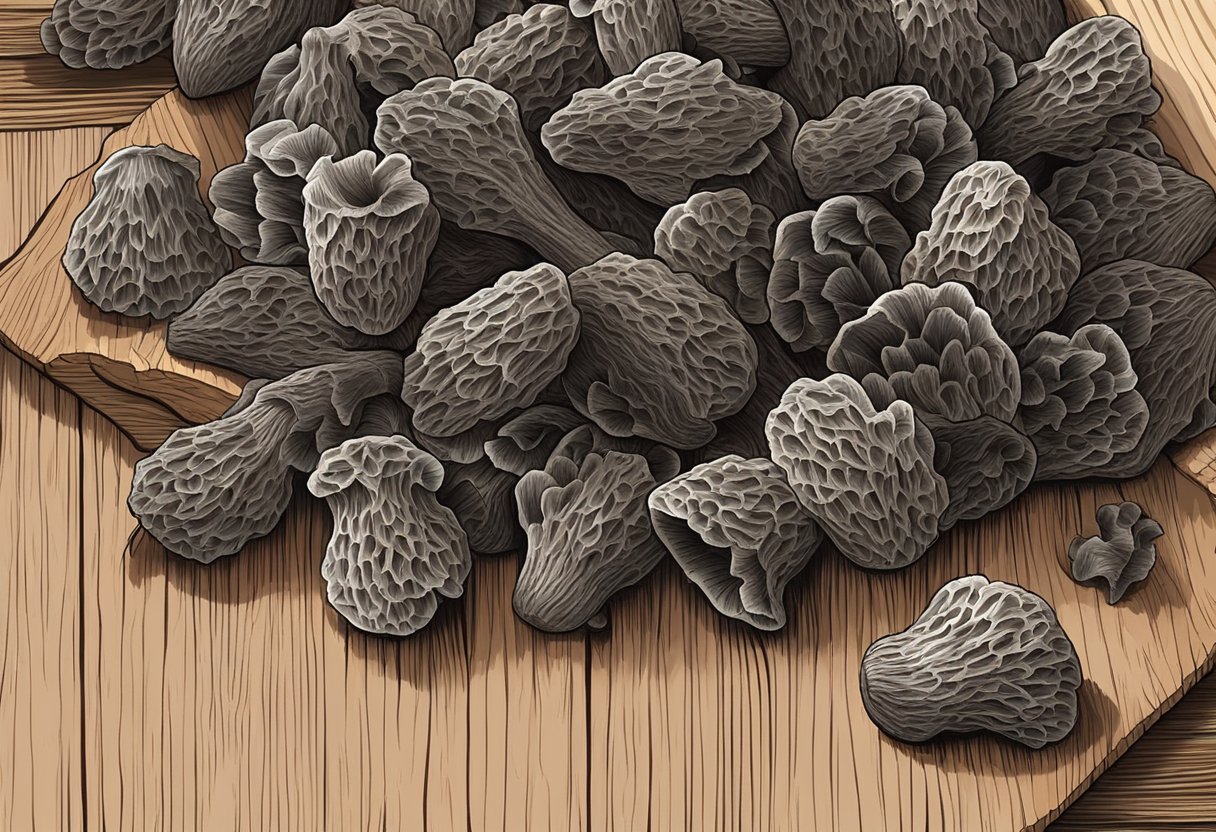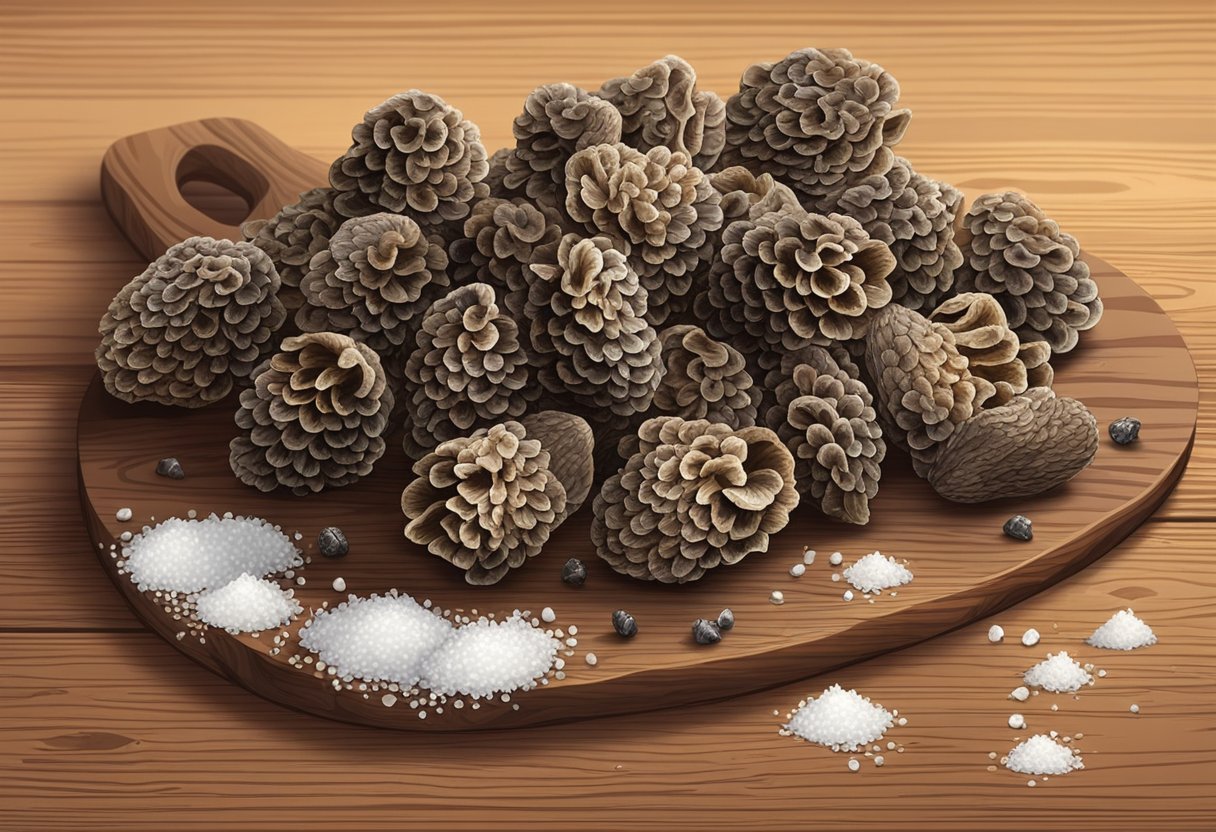Dried morels are a gourmet treasure sought after by chefs and food enthusiasts for their unique flavor profile and culinary versatility. These mushrooms, when dried, intensify in their rich, earthy, and nutty flavor, providing a distinct taste experience that’s unmatched by other varieties. Whether foraged in the wild or purchased from a reputable source, dried morels add an exquisite depth to an array of dishes, from soups and sauces to pastas and risottos.

To harness their full potential, it’s important to understand the proper preparation of dried morels. Prior to cooking, they must be rehydrated, which revives their shape, texture, and taste, making them almost indistinguishable from their fresh counterparts. The hydration process typically involves soaking the morels in warm water or broth, allowing them to absorb liquid and plump up. Once rehydrated, dried morels are ready to elevate your cooking, infusing meals with their strong, luxurious essence.
Key Takeaways
- Dried morels enhance dishes with a concentrated earthy and nutty flavor.
- Proper preparation, including rehydration, is crucial for cooking with dried morels.
- These mushrooms are versatile, enriching various recipes from soups to main courses.
Understanding Morels

Morels, regarded for their distinctive earthy and nutty flavors, are a wild mushroom variety treasured by chefs and foragers alike. They offer not only culinary depth with their unique umami taste but also significant health benefits.
Types and Characteristics
Morels feature a honeycomb-like appearance and vary in color from light yellow to deep brown. True morels are hollow when cut longitudinally, which is a key characteristic to differentiate from false morels—a poisonous look-alike. Usually found in spring, their harvest peak is typically in May depending on the local climate.
Health Benefits
These wild mushrooms are low in fat and high in antioxidants and nutrients, such as vitamins B and D, iron, and copper. The health benefits of morels include anti-inflammatory properties which may lower the risk of chronic diseases.
Proper Storage Techniques
To preserve the flavor and texture of morels, store them in a dry, cool place away from direct sunlight. For long-term storage, drying morels and keeping them in an airtight container is effective. If you choose to freeze them, ensure all moisture is removed to prevent spoilage.
Identifying and Avoiding False Morels
Be vigilant as false morels are poisonous and can be mistaken for their edible counterparts. True morels have a completely hollow interior, while false morels will generally have a substantive or cotton-like interior structure.
Foraging Tips
For the aspiring forager, knowing where to look is crucial. Morels tend to grow in woodland areas, particularly under deciduous trees. Always forage with an expert until you’re confident in identifying true morels, and remember to leave no trace to preserve natural habitats.
Drying and Rehydrating Process
Drying morels is a way to extend their shelf life. Use a dehydrator or a low oven temperature to slowly remove moisture. To rehydrate, soak them in water or a soaking liquid like milk for 20 minutes, which can then be used to add a flavorful boost to your dishes.
Cleaning and Preparation
Before cooking, clean morels thoroughly to remove dirt. Use a fine-mesh sieve or cheesecloth to gently rinse them without damaging their delicate structure. Italic Preparation should be done carefully to maintain their integrity and enhance their earthy and nutty flavor.
Culinary Uses of Dried Morels
Dried morels are prized for their intense, earthy flavor, and their ability to infuse dishes with a rich, meaty texture. When using dried morels in your kitchen, it’s important to understand the proper techniques to maximize their culinary potential.
Rehydrating Techniques
To rehydrate dried morels, soak them in hot water for 20 to 30 minutes until plump. Ensure the water is just off the boil; too hot, and it can diminish their flavor. Patience in rehydrating will reward you with a texture that is close to fresh morels.
Cooking Methods and Tips
Once rehydrated, dried morels can be sauteed in butter or olive oil until they are fragrant and translucent. For baked dishes, oven-braising morels with a splash of liquid preserves their texture. Whether you’re making a sauce, soup, or risotto, the gentle simmer is key to prevent toughening the morels.
Incorporating Dried Morels into Recipes
Incorporate rehydrated morels into pasta dishes, pizza toppings, or stuffings for an earthy, robust flavor. Given their strong profile, they pair well with ingredients that complement their richness without overpowering them.
Morel-Infused Oils and Butters
Infuse oils and butters with dried morels for a fragrant, earthy addition to your culinary creations. Simply steep the rehydrated mushrooms in warm oil or melted butter to impart a subtle morel essence.
Pairing with Meats and Vegetables
Pair dried morels with meats like steak or enhance the taste of vegetables like asparagus and peas. Their robust flavor complements red meats and adds depth to vegetarian dishes.
Utilizing the Soaking Liquid
Don’t discard the soaking liquid; it is a treasure trove of flavor. Filter it to remove any grit and use it as a mushroom stock for soups, broths, and sauces, intensifying the morel essence throughout your dish.
Vegetarian and Vegan Dishes
Dried morels can transform vegetarian and vegan dishes by adding a meaty texture without the meat. Utilize them in morel risotto or as a savory addition to vegan stews for a richer, healthier option.
Seasonal Morel Recipes
Spring is morel season, and what better way to celebrate than with fresh morel risotto? Enhance your dish with fresh herbs like thyme, basil, and shallots. This is the perfect time to experiment with morels, creating memorable dishes that herald the arrival of spring.
Frequently Asked Questions

In this section, you’ll find detailed answers to some of the most common inquiries about dried morels, from preparation to storage.
How can you rehydrate dried morels for cooking?
To rehydrate dried morels, soak them in warm water for about 20 to 30 minutes. The water used for rehydration can be reserved and infused in sauces or broths to enhance flavors in your dishes.
What are the health benefits of morel mushrooms?
Morel mushrooms are a good source of Vitamin D, iron, and antioxidants. Including morels in your diet may contribute to improved bone health and a boosted immune system.
Why is it advised not to consume morels with alcohol?
It is recommended to avoid alcohol when consuming morels, as some individuals may experience adverse reactions. This is due to certain compounds present in morels that can interact with alcohol.
What is the shelf life of dried morels when stored properly?
When stored in airtight containers in a cool, dark place, dried morels can last for an extended period, typically up to a year or longer, while maintaining their flavor and texture.
How does the price of dried morels compare per pound in 2023?
The price of dried morels per pound can be quite high, often reflecting the challenges of foraging these elusive mushrooms, with prices typically ranging from $200 to $400 depending on quality and availability.
Can dried morels be used in a variety of recipes, and if so, how?
Dried morels are incredibly versatile and can be used in a wide array of recipes, from risottos to stews. They impart a rich, earthy flavor that can elevate the taste profile of your meals.


